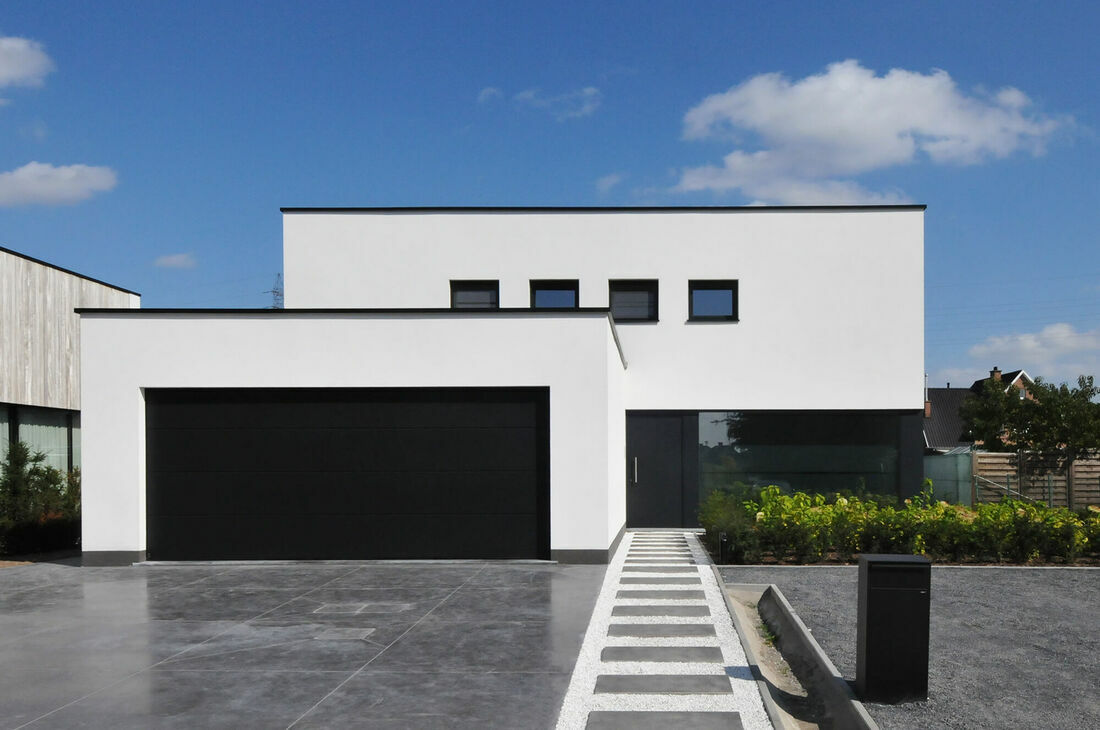
A story of 'fermettes' and bunker houses as a mirror of who we are and what we feel, even if we do not dare to say so in so many words.
In times of uncertainty, many people invariably go back to old, established values. One's own home, especially for belgians traditionally born with a brick in the stomach, is such a beacon of trust and support. When the fear of the future increases, many people tend to secure themselves in their own familiar nest. Openness must then give way to closedness. The heimat, and the past, are romanticized and acquire a mythical meaning. It is perhaps no coincidence that the series 'The story of Flanders' on the public broadcaster shaves unprecedented viewing figures peaks. What is from here, and is ours, 'feels' good.
The new style of the Fleming is then illustrative of deep-rooted feelings and emotions. I sometimes compare the current spirit of our time with life in the 70s and 80s of the last century. Also such a long period of economic stormy weather and fear of the future. The architectural style of many Flemish people in that period was inspired by old farmhouses, from the fantasy world of Stijn Streuvels, also sometimes called 'fermette'. In those days, 'fermette' was still a status symbol for someone who was up to date. Only later did 'the culture of the fermette' become a swear word. The 'fermette' was characterized by small windows and an interior that seemed to have been plucked from the small farms in the open-air museum of Bokrijk. Half a century ago, the 'fermette' was a break with the modernity and openness of the 'golden sixties'.
Today, Flemish people no longer build a fermette, but fear and uncertainty do resurface. And that has been evident for several years in the new style with cubist housing forms, again with small windows on the street side and with minimalist interiors inspired by the German Bauhaus of more than 100 years ago. Yesterday's 'fermette' has today become a 'bunker', often made of reinforced concrete, a safe shelter in the middle of a hostile environment. And the so-called 'culture of the fermette' of half a century ago has today given way to a 'bunker mentality'. Seemingly different and different, but in both cases essentially a symbol for withdrawing from the angry outside world and folding back on oneself. The farmhouse and the bunker house as a contemporary 'refuge', a familiar retreat in times of disaster.
Everything comes back, it seems. But that's only one half of the story. One's own home may be a mirror of the spirit of our times, but at the same time its functions have evolved, along with the new needs of the people who live there.
Today, we are building more sustainably and energy efficiently than ever before. The bunker house as a line of defense in the fight against global warming.
A home is not only a place to live, but also increasingly to work in. The bunker house as a fence against another pandemic that lurks around the corner.
A home will be an inclusive home that takes into account the different stages of life and generations. The bunker house as a sanctuary to live longer at home if the aging of the population accelerates.
The future is also the digital home, a bunker home as a command post in which you are 'always on' and remain connected to the rest of the world. 'Staying apart is the best way to stay united', to paraphase Coca Cola.
Fermette from the past or bunker house today, a house is never the same house.
Written by BBDO Belgium Team, We create effectiveness